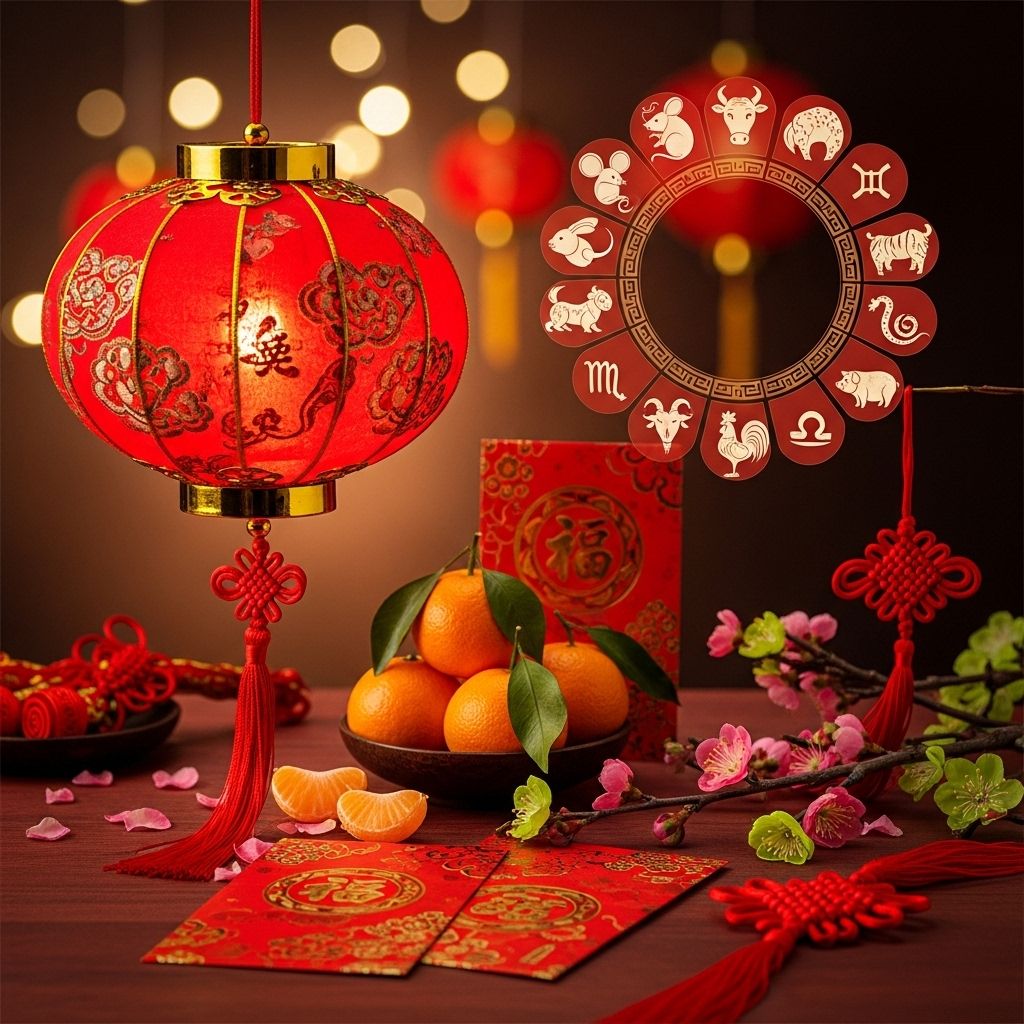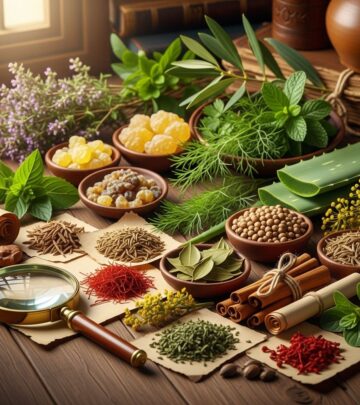Your Complete Guide to Lunar New Year and the Chinese Zodiac
Customs passed down through generations reveal hidden aspects of character and fortune.

Lunar New Year: Origin, Traditions, and the Zodiac
The Lunar New Year, often called the Spring Festival in China, is celebrated in many Asian countries and communities around the world. It marks the beginning of a new year on the traditional lunisolar calendar, aligning with the cycles of the moon rather than the solar year. In 2025, Lunar New Year falls on January 29th, initiating celebrations that last up to 16 days and culminate with the magnificent Lantern Festival.
Where Lunar New Year is Celebrated
- China (Chūn Jié)
- Vietnam (Tết)
- South Korea (Seollal)
- Mongolia (Tsagaan Sar)
- Singapore, Indonesia, Malaysia, Taiwan, and the Philippines (with local names and customs)
This festival is a time for families to reunite, honor ancestors, and usher in happiness, prosperity, and good fortune for the year ahead.
The Significance of the Lunar Calendar
The lunar calendar determines the exact date of Lunar New Year each year. The festivities always begin on the first new moon and end on the next full moon, 15 days later. The symbols, foods, and activities are designed to encourage luck and sweep away misfortune from the previous year.
Preparations and Customs Before and During the Festivities
- Spring Cleaning: Families sweep and clean their homes to remove bad luck and invite fresh energy.
- Decorations: Homes are adorned with red lanterns, spring couplets (auspicious calligraphy on red paper), paper cuttings, and gold-colored symbols of wealth.
- Offerings: Special foods and offerings are made to welcome family ancestors and the Kitchen God, who is believed to report on the household’s behavior to the heavens.
Preparation kicks off on the 23rd day of the last lunar month. The portrait of the Kitchen God is posted in the kitchen, with sweets sometimes pressed onto his lips to ensure he only speaks kindly of the family.
Key Lunar New Year Traditions
- Reunion Dinner: On New Year’s Eve, families gather for a lavish meal featuring delicacies like fish (symbolizing abundance) and dumplings (wealth).
- The Lion Dance: Performed to the steady beat of drums, the lion dance is a vibrant tradition meant to scare away bad spirits and bring good luck and fortune.
- Firecrackers and Fireworks: Loud noises are made to chase away negative energies and mark a joyful start to the new year.
- Red Envelopes (Hongbao): Elders give children red envelopes containing money, symbolizing wishes of luck and prosperity.
- Lantern Festival: The celebrations end with spectacular displays of colorful lanterns, performances, and sweet glutinous rice balls called tangyuan.
The Chinese Zodiac: Meaning and Importance
Perhaps the most recognizable feature of Lunar New Year is the Chinese Zodiac — a 12-animal cycle that repeats every dozen years. Each year is ruled by a different animal, and each animal is thought to bestow specific traits on people born in that cycle. In 2025, the zodiac transitions to the Year of the Snake.
| Animal | Years (Recent Cycles) | Personality Traits |
|---|---|---|
| Rat | 2008, 2020, 2032 | Resourceful, adaptable, quick-witted, charming |
| Ox | 2009, 2021, 2033 | Diligent, honest, reliable, strong |
| Tiger | 2010, 2022, 2034 | Courageous, ambitious, confident, competitive |
| Rabbit | 2011, 2023, 2035 | Gentle, compassionate, clever, meticulous |
| Dragon | 2012, 2024, 2036 | Dynamic, charismatic, energetic, visionary |
| Snake | 2013, 2025, 2037 | Wise, enigmatic, poised, intuitive |
| Horse | 2014, 2026, 2038 | Active, free-spirited, optimistic, independent |
| Goat (Sheep) | 2015, 2027, 2039 | Gentle, creative, empathetic, kind |
| Monkey | 2016, 2028, 2040 | Playful, intelligent, inventive, flexible |
| Rooster | 2017, 2029, 2041 | Practical, observant, unpretentious, hardworking |
| Dog | 2018, 2030, 2042 | Loyal, honest, helpful, dutiful |
| Pig | 2019, 2031, 2043 | Generous, warm-hearted, sincere, sociable |
Determining Your Chinese Zodiac Sign
Your zodiac sign is based on the year you were born, not your birthday. The transition date varies since the Lunar New Year doesn’t always align with the Gregorian calendar:
- If you were born in January or February, consult a Chinese zodiac calendar to confirm your sign, as your birthday may fall before or after the new year starts.
Celebrating According to Your Zodiac Sign
- Personalized Traditions: Many people wear clothing or accessories bearing their zodiac animal for extra luck.
- Zodiac Forecasts: At the start of each year, people read or share horoscopes predicting their fortune, career, and love life according to their animal sign.
- Lucky Colors and Numbers: Zodiac signs are associated with distinct colors, elements (wood, fire, earth, metal, water), and lucky numbers to incorporate in New Year rituals.
Lunar New Year Food Traditions
Food plays a central role in celebrations, with each dish carrying symbolic meaning. Common favorites include:
- Dumplings: Representing wealth and prosperity, shaped like ancient silver ingots.
- Fish: Symbolizes surplus and abundance. Often served whole for completeness.
- Sweet Rice Balls (Tangyuan): Celebrated at the Lantern Festival, symbolizing family reunion.
- Longevity Noodles: Eaten for long life, never cut to ensure the wish is fulfilled.
- Spring Rolls: Resembling gold bars, representing wealth for the coming year.
Icons and Customs: Lantern Festival, Lion Dance, and Red Envelopes
- Lantern Festival: On the fifteenth lunar day, the Lantern Festival signals the official end of holiday celebrations. Vibrant lantern displays often have elaborate designs symbolizing hope and togetherness.
- Lion Dance: Accompanied by drums, the lion dance is performed in streets, restaurants, and homes to usher in good fortune and drive away evil spirits.
- Red Envelopes: A highlight for children, these envelopes (often beautifully decorated) carry cash from elders as blessings for happiness and health.
Lunar New Year Around the World
While traditions vary by country and region, the key themes of family, renewal, and blessing are universal. Here are a few international customs:
- Vietnam (Tết): Homes are decorated with peach blossoms; families create altars for ancestors and eat bánh chưng (sticky rice cakes).
- South Korea (Seollal): Ritual ancestor ceremonies, wearing traditional hanbok, and playing folk games like Yut Nori.
- Mongolia: Known as Tsagaan Sar, families greet with wishes of health and prosperity, enjoy buuz (steamed dumplings), and honor elders.
Frequently Asked Questions (FAQs)
Q: How do the Chinese zodiac signs differ from Western astrology?
A: The Chinese zodiac system is lunar-based and operates on a 12-year cycle, with each year assigned an animal representing unique personality traits. In contrast, Western astrology uses a solar calendar and divides the year into 12 signs based on birth month.
Q: What language is used to greet people during Lunar New Year?
A: In Mandarin, you’ll hear “Xīnnián Kuàilè!” (Happy New Year) and “Gōng xǐ fā cái!” (Wishing you prosperity).
Q: What’s the best way to celebrate Lunar New Year at home?
- Clean your space to sweep away bad luck.
- Decorate with red lanterns and spring couplets.
- Host a feast with symbolic dishes (dumplings, fish, noodles).
- Share red envelopes with loved ones.
- Set off firecrackers (if permitted) or stream New Year performances online.
Q: What taboos or customs should I be careful of?
- Avoid speaking about death or unlucky topics.
- Don’t break things or use negative language.
- Try not to clean or sweep on New Year’s Day to avoid sweeping away luck.
Q: Which zodiac animal is considered the luckiest?
A: The Dragon is often regarded as the luckiest and most auspicious sign, symbolizing power, success, and prosperity. The animal’s influence may vary depending on tradition and context.
Final Thoughts: Welcoming Renewal and Joy
Lunar New Year is more than just a festival—it’s a vivid tapestry of rituals, beliefs, and shared hopes. Whether you’re honoring ancestors, enjoying dishes rich in symbolism, or simply appreciating the beauty of the Lantern Festival, every tradition reflects the universal human desire for joy, renewal, and connection. Embrace your zodiac, share in the celebration, and let the spirit of Lunar New Year guide you into a fresh and prosperous year!
References
- https://tapestry.info/wp-content/uploads/2024/11/A-Beginners-Guide-to-The-Lunar-New-Year.pdf
- https://bobanutrition.co/blogs/news/the-ultimate-guide-to-chinese-zodiac-unveiling-chinese-new-year-animals-and-years
- https://chinesenewyear.net
- https://www.misspandachinese.com/chineselunarnewyearguide/
- https://www.ecinnovations.com/blog/chinese-new-year-origins-traditions-celebrations-and-zodiac/
- https://www.chinahighlights.com/travelguide/chinese-zodiac/
- https://studycli.org/chinese-holidays/chinese-new-year/
Read full bio of medha deb











